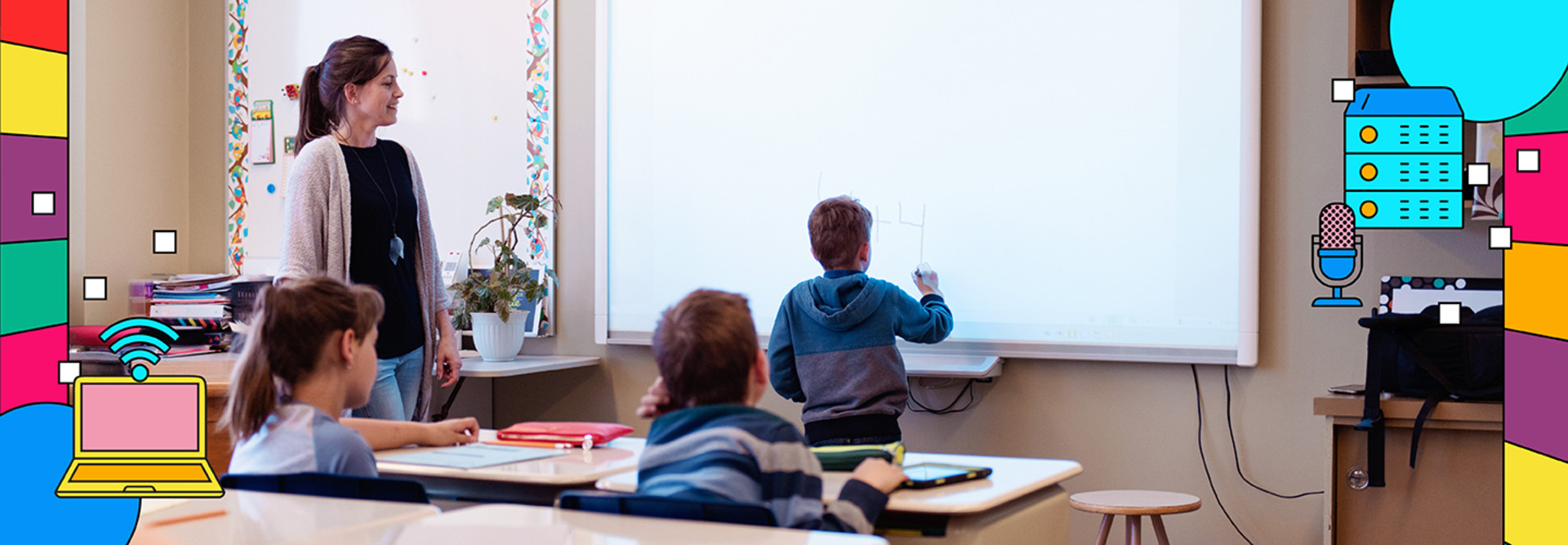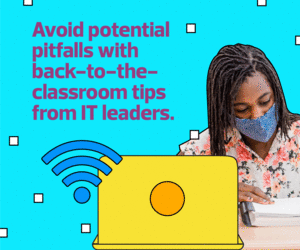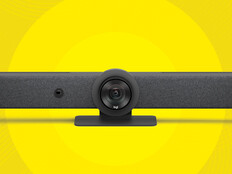Interactive panels, on the other hand, are built for classroom use. A recent report found that 52 percent of teachers chose interactive panels as their most-used classroom tools. Peters noted that 75-inch panels seem to be the “sweet spot” for most schools.
EXPLORE: Promethean releases product enhancements for K–12 classrooms.
The past year also brought wireless casting and AV carts to the forefront of classroom design. These elements are likely to remain as popular options for IT teams and educators.
“When the majority of our students were at home, cart solutions worked well, and what we’ve seen is a desire to continue this,” Peters said. “You’re able to pivot on the fly and move them around, and you’re able to quickly stand up a videoconferencing solution.”
Wireless collaboration tools will continue to play an important role as students come back to in-person learning. “Wireless casting is a huge consideration,” said Peters. “As we are coming back into the environment, after we’ve been trained to wash our hands and minimize touch, wireless casting promotes healthy behaviors.”
The Future Is Remote — and Hybrid
Peters noted the hybrid and remote trend accelerated the adoption of videoconferencing as a realistic learning tool. He also pointed out the importance of students embracing the technology now. “In the higher ed space, this is not going away,” Peters said. “They are actively designing their classrooms to support videoconferencing.”
Another trend emerging in response to the pandemic are lecture spaces that allow teachers to connect with students on a personal level, even when teaching remotely. This could bolster much-needed social-emotional learning in the K–12 environment.
MORE FROM ISTELIVE 21: Listen as two educators discuss digital equity and social-emotional learning.
Peters explained that this personal connection is possible with smaller room setups that are outfitted with technologies to support the classroom space. These technologies allow teachers to have a line of sight with all the students.
Curious about other emerging trends? Look for items like e-glass, a collaboration tool that allows presenters to write on a clear plane of glass and have the content automatically flipped to display for viewers. Video walls for media and communal spaces will also increase in popularity, along with networking solutions like AV over IP and digital signage.
“There are a number of solutions out there,” Peters said. Ultimately, “we are all trying to drive toward more collaboration in our classroom spaces.”
Join EdTech as we provide written and video coverage of ISTELive 21. Bookmark this page and follow us on Twitter @EdTech_K12.












